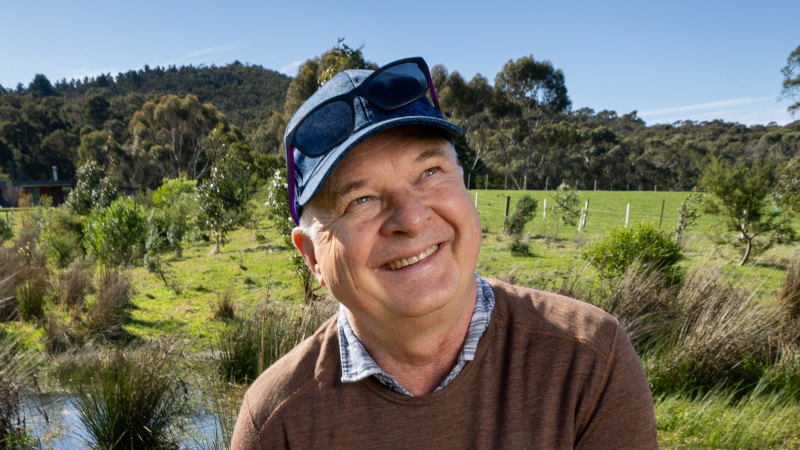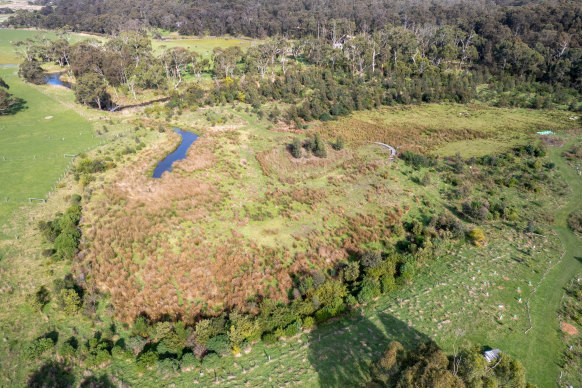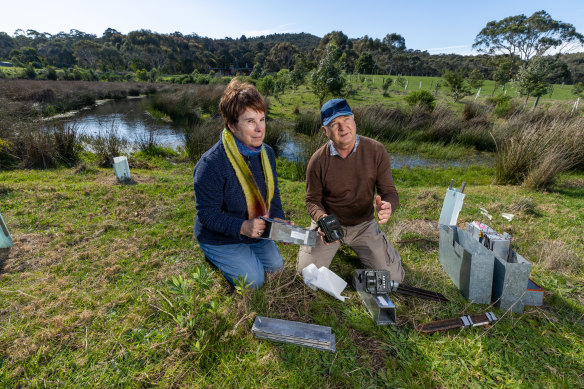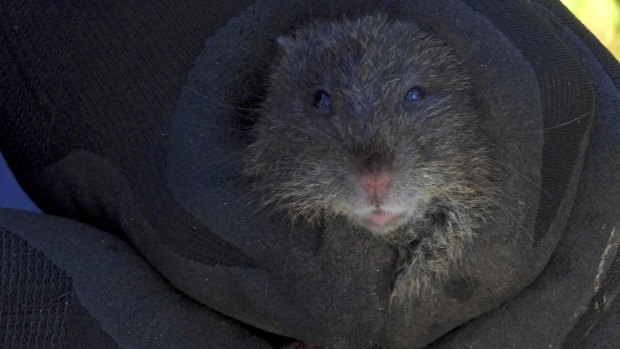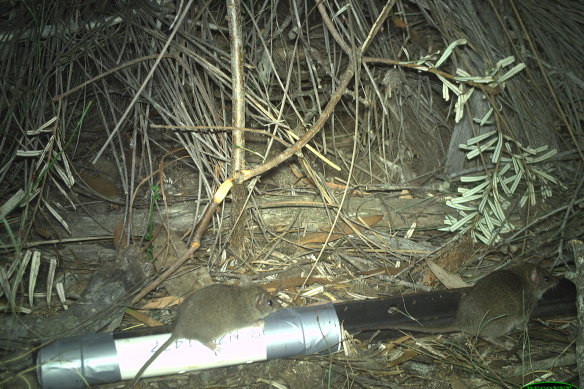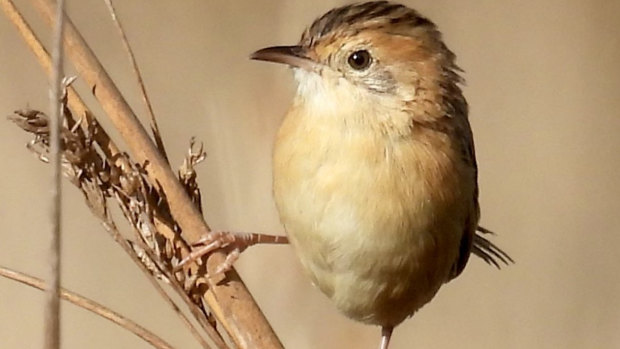Save articles for later
Add articles to your saved list and come back to them any time.
Key points
- Native animals have returned to this former horse paddock near the Great Ocean Road.
- Countless hours of community work have gone into replanting the Aireys Inlet site.
- A covenant now ensures it will be protected in perpetuity.
Beneath the forested hills just behind the Great Ocean Road, nature is reclaiming what was once a barren and trampled horse paddock.
Young eucalypts thrive – some growing four metres tall in just a few years, rising above the vivid yellow prickly moses wattles and native grasses.
The landscape healing at the Aireys Inlet site. Credit: Jason South
Locals say this 11-acre parcel of land at Aireys Inlet had long been a degraded landscape devoid of endemic vegetation before they began planting thousands of indigenous trees and shrubs.
Native animals are returning too, indicating the natural ecosystem is healing and rebuilding.
South Melbourne ophthalmologist Michael Loughnan and his wife Jacinta Halloran bought the land for just over $1 million in 2018 and started rehabilitating it the following year with residents and local environment groups.
Since then, the wet La Nina weather pattern has stimulated plentiful vegetation growth, helping to transform the land.
Deakin University ecologist and Aireys Inlet resident Barbara Wilson has conducted extensive animal surveys on the property and the surrounding Painkalac Creek Valley.
At Loughnan’s property she has photographed, trapped and observed an array of fauna, including a small carnivorous mammal called the agile antechinus, the otter-like rakali, kangaroos and native swamp rats.
Wilson said introduced house mice were rampant at the site before it was replanted. Now the invasive creatures are being crowded out by local species seizing back their habitat.
“I’m extremely impressed,” she said of the transformation.
Ecologists Barbara Wilson and Mark Garkaklis with the traps they set to record the presence of native mammals. Credit: Jason South
Wilson said about 40 bird species had been recorded at the site, including birds of prey, a sign that animals were living in the new growth.
A billabong that was previously drained has now been revived, attracting native frogs, eels and waterbirds.
Wilson’s surveys have also found threatened species dwelling nearby, including vulnerable bandicoots and swamp antechinus, and she hoped colonies of these animals would become re-established in Loughnan’s property, too.
Rejuvenating cleared land was among the few options for bringing back threatened species in the region, she said.
“It’s a long road, but that’s all we’ve got,” Wilson said. “They’re refuges.”
Her partner and fellow ecologist Mark Garkaklis admits he doubted the site could be saved when the rehabilitation began.
“It was an entire moonscape,” he said. “Now I look at it and I think this is amazing.”
Garkaklis said the presence of the tiny and bright blue superb fairy-wren showed the bush was returning to its natural state.
“They love structure,” he said. “They hate the open areas.”
Loughnan said he was motivated to protect the natural environment at Aireys Inlet, having holidayed there since the 1990s before buying a separate property in 2011.
Now, he loves seeing nature reassert itself at the site.
“It’s my happy place,” Loughnan said.
A native swamp rat trapped and released at the Aireys Inlet site.Credit: Barbara Wilson
He said he has received about $100,000 in grants split between the state and federal governments in addition to contributing about $30,000 of his own money.
Loughnan estimates he and groups including the Angair conservation society have planted about 8000 native trees and plants on the property, in addition to grass seeds sown over about two acres. The Aireys Inlet and District Association has been involved too.
They all might be swimming against the tide of climate change as well as species and habitat loss. But the property has given them hope they can at least make a small difference to their local environment.
“Going down there and seeing animals and even insects come back is just so heartening,” Loughnan said.
The mammal agile antechinus photographed at the rehabilitated Aireys Inlet property. Credit: Barbara Wilson
He has begun building a boardwalk, so people can walk among the wildlife without trampling on it.
Although countless hours have gone into vegetating the land, Loughnan has resisted manicuring the property.
“You never want to intervene too much. I don’t want it to be a garden. I want nature to make decisions.”
The property is now covered by a Trust for Nature covenant – a legally binding agreement that requires the landholder to preserve the natural habitat on the land in perpetuity. Conditions may include managing weeds and controlling invasive species.
A golden-headed cisticola at the Aireys Inlet site after extensive replanting of native trees and plants on the land.
Trust for Nature’s Corangamite regional manager, Jo Day, said there were now about five properties at Aireys Inlet protected by conservation covenants.
She said these properties provided wildlife connections to the nearby Otway Ranges.
“It’s part of a larger quilt in the landscape,” Day said.
And she expects that quilt to spread. Day said she recently received a phone call from another property owner at Aireys Inlet who is considering placing a covenant on her land.
Anglesea resident Peter Forster, who is a committee member of Angair, said Loughnan’s property served as an example to other owners of how they could rehabilitate their land.
“It’s a good demonstration site of how we can protect local biodiversity,” he said.
Forster, a former wool grower, said he hoped the rewilding project could help native animals to reclaim more of their natural habitat and link back to the forest.
“We want the rare mammals to extend their range back to where they were.”
Get the day’s breaking news, entertainment ideas and a long read to enjoy. Sign up to receive our Evening Edition newsletter here.
Most Viewed in National
From our partners
Source: Read Full Article
